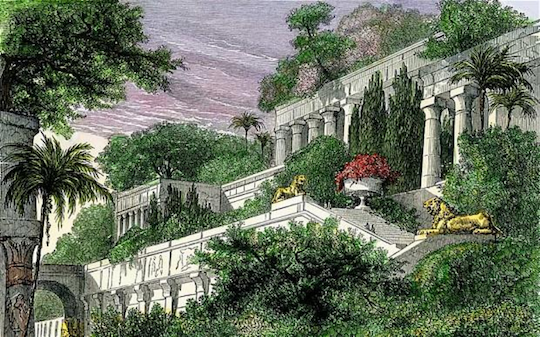King Nebuchadnezzar II was thought to have the hanging gardens built in the ancient city of Babylon. It was built on the banks of the Euphrates River, near the tower of Babel, as an offering of love to his wife Amytis. He did this in order to remind her of the beautiful, mountainous and florid land that she was from.
According to a researcher at the University of Oxford, the location and person who ordered the gardens are not what and who we think they are. It is thought that it was commanded to be built by the Assyrian King Sennacherib around 600 BC in the capital of his kingdom, Nineveh, which is located on an extensive plain in the confluence area between the Tigris River and the Khosr River, near present-day Mosul.
Although it is not the same location, the reason for its construction is thought to have the same motive. It was a symbol of love for the king’s wife, the queen consort. Also, he built it so that she could remember the beautiful mountains of her flowery land in these desert plains.
Nineveh held a strategic position on the routes of the Mediterranean Sea and the Indian Sea, making it one of the most important cities of antiquity. As a result, the gardens were able to be blessed with a great diversity of plant species grown on their terraces and arches.
Although the garden was designed to evoke the memory of the queen’s florid land, fruit species such as pears, fig trees, quinces, coconut trees, date palms, vines and almond trees were also cultivated and collected to supply the Palace court.
Given the strategic, wealthy enclave where the garden was located, it could not be lacking in the olive trees. These represented the true symbol of love and prosperity between the king and his beloved wife. Both of them appreciated olive trees so much that the liquid gold extracted from its fruits were used as a token of appreciation in all the commercial transactions that were carried out in the Palace court, in order to perpetuate the prosperity of the kingdom.
The figure of the olive tree is therefore considered as a symbol of love, hospitality, wealth and well-being, thus demonstrating its omnipresence and constant connection with humanity once again.

